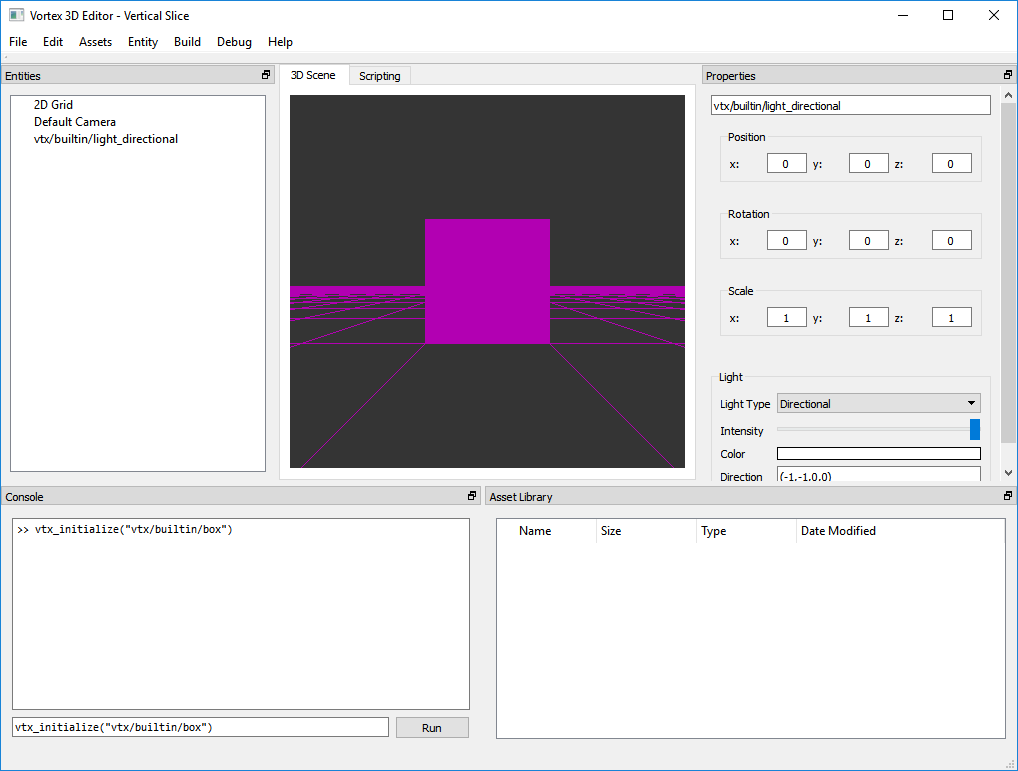Building the Engine Scripting API
Last week when we left off, we were able to implement a Lua REPL in the Vortex Editor console. This week, I wanted to take things further by allowing Lua scripts to access the engine’s state, create new entities and modify their properties.

In order to get started, I added a simple single function: vtx_instantiate(). This function is available to Lua, but its actual implementation is provided in native code, in C++. The image above shows how we can use this function to add an entity to the scene from the console.
This simple example allows us to test two important concepts: first, that we can effectively call into C++ from Lua. Second, it shows that we are able to pass in parameters between the two languages. In this case, the single argument expected is a string that specifies which primitive or asset to instantiate.
With this in place, we can now move on to building a more intricate API that enables controlling any aspect of the scene, respond to user input and even implementing an elaborate world simulation.
Best of all, because the Lua VM is embedded into the engine, scripts built against the Vortex API will by definition be portable and run on any platform the engine runs on. This includes, of course, mobile devices.
The idea now is to continue to expand the engine API, developing a rich, easy to use set of functions. API design should prove an interesting exercise. Stay tuned for more!